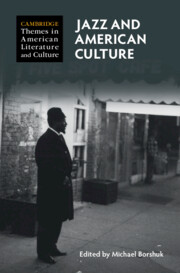
In late 2022, BMW began manufacturing their new hybrid SUV, the XM. The German automaker had unveiled the vehicle in concept form a year earlier—at an Art Basel event they sponsored in Miami Beach, Florida. Promoting the forthcoming release of a “product unlike anything [BMW had] ever produced,” the company paired the vehicle’s premiere with a live performance by hip-hop MC Nas and the exhibition of a commissioned artwork titled “Intrinsic Sage” by the Brooklyn sculptor Kennedy Yanko. With an anticipated six-figure sticker price, the XM was obviously intended for the luxury class, but BMW made sure—through this synergy with notable creators—to embed cultural cachet into its impending debut. When the XM finally hit showrooms, BMW also incorporated jazz performance—and its associated prestige—within this ongoing strategy. In a video ad entitled “The XMinded – Break the Norm,” BMW juxtaposed glossy images of the new SUV with voiceover and musical performance from contemporary trumpeter Chief Xian aTunde Adjuah (né Christian Scott). Eyeing the XM and hearing Adjuah’s muted improvisations, the audience was meant to understand that the car, like the finest jazz performances, “takes the best of the past”—as the musician intones in the commercial’s spoken punchline—”to shape the future.”
While striking in its juxtapositions, the BMW ad isn’t novel for addressing commercial exigency by turning to jazz and its cultural resonances. Advertisers’ use of jazz has a varied, decades-old history. In the 1980s, Miles Davis appeared in TV ads for Honda Scooters; a decade later, his posthumous likeness was appropriated in memorable print campaigns selling GAP khakis and Apple computers. In 2002, Nike promoted the 17th edition of the Air Jordan basketball shoe with a campaign that evoked the visual style of Blue Note Records’ midcentury album covers. Pianist and vocalist Diana Krall has pitched Chrysler sedans; trumpeter Wynton Marsalis has been the face of Movado watches and Brooks Brothers clothes. All these examples speak to the paradox that frames Mark Laver’s 2015 book, Jazz Sells: Music, Marketing, Meaning. “How is it possible,” Laver asks, in that volume’s preface, “that a musical practice that has commonly (if not always accurately) been linked to countercultural and anti-capitalist movements—indeed, that has itself been discursively constructed as extra- or anti-commercial to a considerable extent—can be so readily put to use in service of both everyday commerce and the broader ideology of capitalism?”
Laver proposes his own answers to that question over the course of his book, but I would suggest here the jazz and advertising paradox points generally to the music’s wildly heterogeneous influences, stylistic variations, and cultural uses. If we consider thoughtfully and comprehensively the variety of musical acts and approaches that we think of as contributing broadly to jazz as category, we might begin to make sense of the seemingly contradictory ways this fantastic mix has been processed by listeners, critics, scholars, and salesmen alike. Artists that many of us see uncontroversially as participating in “jazz”—either through their use of Afrodiasporic performance practices, for instance, or their aesthetic privileging of improvisation—have been received at times as the embodiment of American democratic idealism or, conversely, as that phenomenon’s fiercest critics.
My new edited volume Jazz and American Culture emerged from the desire to historize jazz and its influence in American culture and to wrestle with the music’s complex resonances as we move deeper into the twenty-first century. Surveying the music and its meanings across a wide range of contexts—from the way musicians produce sound and perform onstage to their appearances on television and film or their influence on language, literature, and visual art—the book resists a unified way to understand jazz and Americanness. Instead, the volume accepts the messiness of these cultural processes as a starting point. In fact, in our current moment, over a century removed from the first jazz recordings, and decades into a wild progression of aesthetic changes and shifting political contexts, I think the only way to understand what jazz means to American culture is to attend to the contradictions. That said, the book is also keenly aware of the music’s foundations in Black expressive traditions and its continued and consistent relevance to discussions around social justice and civil rights. Jazz may be appropriated by those looking to preserve unjust aspects of the American status quo, but it is, at its roots, a form born out of forbearance and the impulse to be free.
As one small measure of the productive messiness I describe above, I invite you to listen to this playlist of recordings referenced across the book. In these musical variations, you’ll hear a constant tension between the consistency of jazz music’s roots and its openness to wayward transformation. I hope the music my contributors and I have curated here constitutes the perfect soundtrack to accompany your movement through the wide-ranging discussion Jazz and American Culture stages.

Jazz and American Culture
by Michael Borshuk
Latest Comments
Have your say!